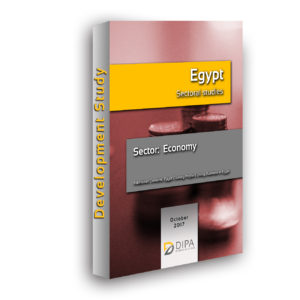 In the wake of the upheaval of recent years, Egypt’s political transition would appear to be complete, with the current parliament largely supportive of the president’s policies. However, security challenges are undermining economic recovery, and the country is underperforming in several key economic sectors, despite overall bright prospects.
In the wake of the upheaval of recent years, Egypt’s political transition would appear to be complete, with the current parliament largely supportive of the president’s policies. However, security challenges are undermining economic recovery, and the country is underperforming in several key economic sectors, despite overall bright prospects.
Egypt is the 29th largest country in the world and the 4th largest country in the Middle East and North Africa. It is the most populous country in the region, with a young population of 88 million, and a relatively high birth rate. The Egyptian system of government reflects a combination of the prime ministerial and presidential systems. The former commander of the armed forces, El-Sisi, currently serves as chief of state.
Egypt has a relatively diversified economy, including a significant manufacturing sector. The country’s GDP was worth USD 282,2 billion in 2014, making it world’s 38th largest economy. As the political transition was concluded in December 2015, the economy started to recover. GDP growth is expected to average at 3,3% in 2016, before rebounding thereafter. Exports reached USD 42,9 billion in 2014, while imports stood at USD 81,9 billion in 2014. The inflation rate increased from previous years and reached 10.1% in 2014, while the unemployment rate has remained stubbornly high and rose progressively during the past three years, reaching 13.37%. Egypt’s budget showed increased deficit from 2009 onwards, reaching USD 271,6 billion in 2014, representing a whopping 6.09% of the GDP.
The business environment in Egypt is restrictive, with the World Bank ranking it 131 out of the 189 countries surveyed in its 2016 Doing Business. While its political and security environment remains uncertain, the relative stability under President El-Sisi is encouraging FDI across key sectors, as economic momentum gradually gathers pace.
The full Development Study deeply analyses the aforementioned as well as several other relevant developments both from a local and a global perspective with the purpose to present the prospects of the Egyptian economy and deliver a set of forward-looking views for businesses and investors.
1.Country Profile
1.1 History of Egypt
1.1.1 Modern Egypt
1.1.2 Post-independence period
1.1.3 Egypt’s Arab Spring
1.2 Geography
1.2.1 Area and Boundaries
1.2.2 Topography
1.2.3 Land Use and Water Resources
1.2.4 Environmental Concerns
1.3 People and Society
1.3.1 Population and National Identity
1.3.2 Demographics
1.3.3 Societal Characteristics
1.4 Government
1.4.1 Framework of Government
1.4.2 Executive Branch
1.4.3 Legislative Branch
1.4.4 Judicial Branch
1.4.5 Political Parties and Leaders
1.5 Main Infrastructure
1.5.1 Transportation
1.5.2 Tele Communications
1.5.3 Energy
1.6 Key Industries and national resources of commercial interest
2. Economic Monitor
2.1 National Accounts
2.1.1 GDP
2.1.2 Inflation and price indices
2.1.3 Labour market
2.2 Fiscal Policy
2.3 Balance of payments
3. Financial Sector and Banking
3.1.1 Interest and exchange Rates
3.1.2 Access
3.1.3 Monetary Holdings (Liabilities)
3.1.4 Assets
3.1.5 Banks in Egypt
3.1.6 Capital and Financial markets
4. Doing Business
4.1 Starting a Business
4.2 Dealing with Construction Permits
4.3 Getting Electricity
4.4 Registering Property
4.5 Getting Credit
4.6 Protecting Minority Investors
4.7 Paying Taxes
4.8 Trading across Borders
4.9 Enforcing Contracts
4.10 Resolving Insolvency
4.11 Business Environment Indexes
